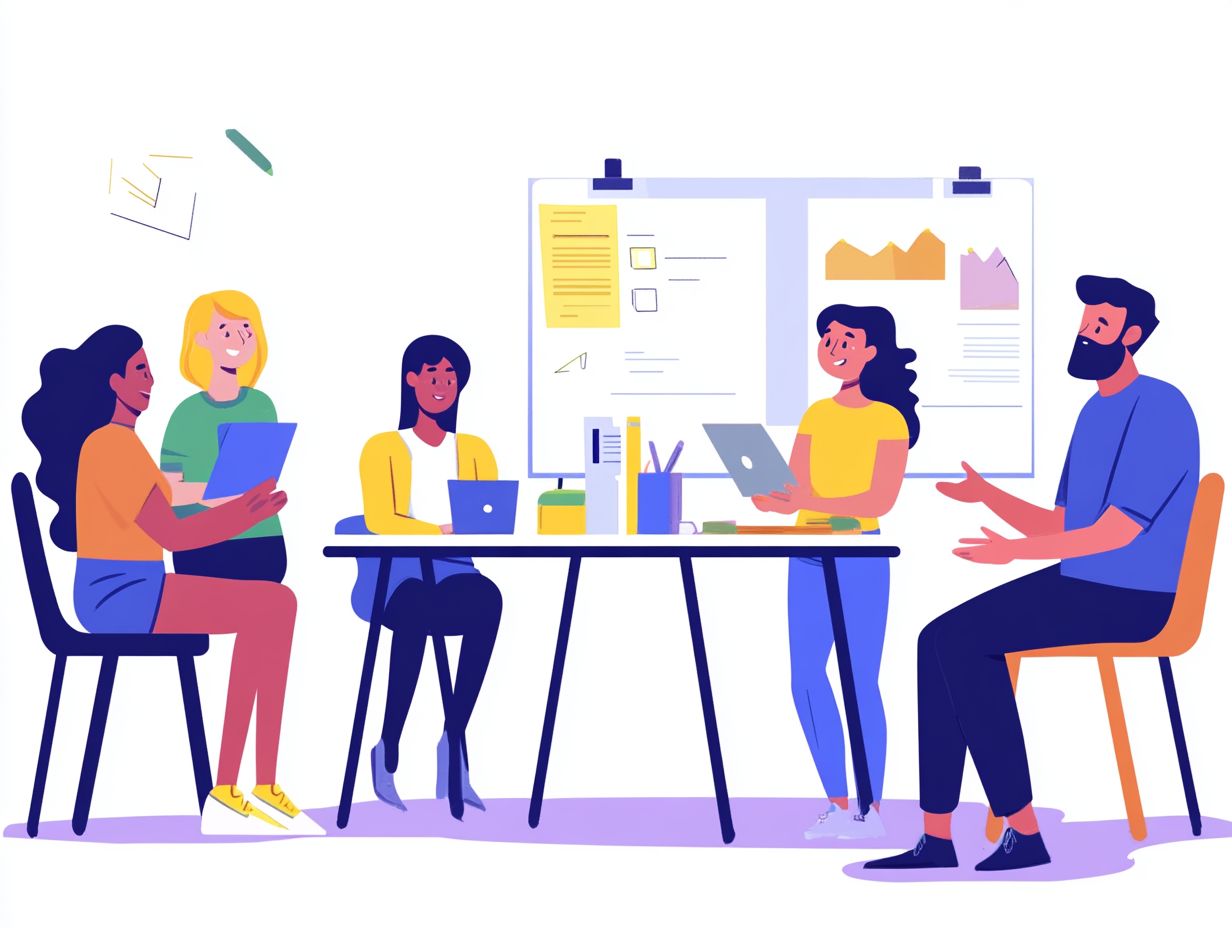How Are Learning Styles Considered in Training?
Understanding learning styles is key for effective training. Each person absorbs information uniquely, and recognizing these preferences can enhance learning and retention.
This article explores various learning styles and highlights the importance of catering to them in training. You ll discover practical methods for customizing content to meet diverse needs.
By addressing the common challenges that arise with different learning styles, we present solutions for a balanced training approach. Dive into this exploration to optimize your training strategies for maximum impact!
Contents
- Key Takeaways:
- Understanding Learning Styles
- The Importance of Considering Learning Styles in Training
- Methods for Incorporating Learning Styles in Training
- Challenges and Solutions for Catering to Learning Styles
- Frequently Asked Questions
- What are learning styles and how are they relevant to training?
- How are learning styles identified?
- Why is it important to consider learning styles in training?
- How can trainers accommodate different learning styles?
- Are certain learning styles more effective than others?
- Can learning styles change over time?
Key Takeaways:

- Incorporating learning styles is crucial for enhancing learning.
- Tailored content and varied activities are key for effective training.
- Finding a balanced approach helps accommodate diverse learning styles.
Understanding Learning Styles
Learning styles are the methods we use to absorb, process, and retain information. The VARK model categorizes these styles into four types: visual, auditory, reading/writing, and kinesthetic learners.
Each style has unique characteristics that shape the learning experience. Visual learners thrive on diagrams and videos, making graphical content beneficial for them.
Auditory learners prefer listening; discussions and podcasts work best for their learning. Reading/writing learners excel with detailed texts and written assignments.
Kinesthetic learners grasp concepts through hands-on experiences, emphasizing the need for practical exercises in training.
By recognizing these distinct styles, you can significantly enhance training effectiveness. This approach leads to higher employee retention and engagement, as individuals feel valued in their learning journeys.
The Importance of Considering Learning Styles in Training
Considering learning styles is essential for optimizing employee training programs. Tailoring strategies to individual learning preferences boosts training effectiveness!
This approach improves learning outcomes and increases employee engagement. Start applying these insights in your training today!
Enhancing Learning and Retention

Enhancing learning and retention is a crucial goal in your employee training efforts. The effectiveness of your training methods directly impacts how well your team absorbs and remembers information.
To achieve this, it s vital to include a variety of training materials and methods. By using visual aids, interactive workshops, and e-learning modules, you can cater to different learning styles, creating a more inclusive experience.
Research shows that learners who engage with diverse content types are more likely to retain information over time. For example, a study in the Journal of Applied Psychology revealed that individuals performing active tasks retained information significantly better than those involved in passive learning.
By implementing these strategies, you not only boost employee engagement but also lay the groundwork for improved performance and overall success in your organization.
Addressing Different Needs and Preferences
Addressing diverse needs and preferences in training programs is crucial for cultivating an inclusive environment that enhances employee engagement and personal development.
By recognizing that each learner absorbs information differently, you can create training modules that cater to various learning styles think visual, auditory, and kinesthetic approaches. For instance, a company might choose a blended learning program, a combination of online and in-person training, that merges online modules with hands-on workshops. This allows employees to connect with the material in a way that suits them best.
Including tools like assessments and feedback mechanisms can help identify knowledge gaps and preferences, leading to customized content that truly resonates with individuals. This helps create a motivated workforce. Such initiatives not only enhance skill retention but also elevate job satisfaction, as employees feel valued and understood in a diverse workplace.
Methods for Incorporating Learning Styles in Training
Incorporating learning styles into your training methods is essential for crafting personalized experiences that resonate with employees. This approach not only enhances the effectiveness of your training programs but also significantly improves learning outcomes, especially in online training environments.
Tailoring Content and Delivery
Customizing your content and delivery methods in training is crucial for engaging learners. This ensures that the material resonates with their unique learning styles and preferences.
This level of customization not only deepens understanding but also significantly enhances retention rates among participants. For example, integrating multimedia resources like videos and infographics can be a game changer for visual learners. Hands-on workshops and role-playing scenarios can captivate those who thrive on movement and interaction.
By embracing these diverse approaches, you can create a more inclusive training environment. When employees feel that their individual needs are acknowledged and met, they are far more likely to engage actively. This creates a positive atmosphere that boosts morale and enthusiasm!
You can expect more successful training outcomes and a noticeable boost in overall productivity.
Utilizing Different Activities

Utilizing a range of activities in your training sessions is essential for catering to the diverse learning preferences of your employees. This ensures that kinesthetic, auditory, and visual learners are all effectively engaged.
By including simulations, hands-on activities, and interactive discussions, you can enhance comprehension and retention across various learning styles. For instance, kinesthetic learners thrive on movement and real-world applications. Auditory learners gain significant benefits from engaging discussions and verbal explanations. Visual learners, on the other hand, respond best to graphical representations and video content.
Integrating these varied approaches cultivates a dynamic learning environment. You can also expect improved performance metrics and increased knowledge retention, leading to a more collaborative workplace atmosphere.
Challenges and Solutions for Catering to Learning Styles
Addressing the challenges of catering to various learning styles in employee training demands innovative strategies that can skillfully meet the diverse needs of a modern workforce.
Overcoming Limitations
Overcoming limitations in addressing learning styles is essential for ensuring that employee training remains effective and promotes a culture of continuous improvement.
Organizations face specific challenges that can hinder this aspiration. Resource constraints can significantly limit the ability to provide a variety of training materials tailored to different learning preferences, making it challenging to engage every employee effectively.
A lack of awareness regarding individual learning styles often leads to generalized training approaches that miss the mark for many. Leadership must champion inclusive training strategies that recognize and value diversity in learning.
Establishing a system for continuous evaluation of training effectiveness will help pinpoint gaps and areas for enhancement, allowing for adjustments that better align with workforce needs.
Creating a Balanced Approach
Creating a balanced approach to employee training that caters to various learning styles ensures that employees feel valued and engaged in the learning process.
This flexibility makes the learning environment more inclusive and helps you retain information better. By integrating visual, auditory, and kinesthetic methods (learning by doing) into training programs, trainers can appeal to diverse preferences, allowing you to engage with the material in a way that resonates most.
Implementing a flexible training delivery model can significantly boost employee engagement; after all, you re more likely to stay motivated when you can choose the format that suits your needs best. This tailored strategy leads to higher retention rates, as employees who feel understood and respected in their learning journeys are likely to remain with the organization longer.
Frequently Asked Questions

What are learning styles and how are they relevant to training?
Learning styles refer to the different ways individuals prefer to receive and process information. In training, understanding and catering to different learning styles can improve the effectiveness of the learning experience.
How are learning styles identified?
Learning styles can be identified through various assessments, such as the VARK questionnaire (a popular tool used to identify learning preferences), which assesses visual, auditory, reading/writing, and kinesthetic learning preferences.
Why is it important to consider learning styles in training?
Not everyone learns the same way. Catering to different learning styles ensures that all trainees have the opportunity to fully understand and retain the information being presented.
How can trainers accommodate different learning styles?
Trainers can use a variety of methods and materials, such as visual aids, hands-on activities, and group discussions, to address the different learning styles of their trainees.
Are certain learning styles more effective than others?
No single learning style is superior; people often have a mix of preferences. It is important to provide a variety of learning opportunities to cater to different styles.
Can learning styles change over time?
While individuals may have a dominant learning style, their preferences can change and adapt over time. Trainers should periodically reassess and adjust their training methods accordingly.
It’s crucial for organizations to act quickly! Explore how understanding learning preferences can transform your training approach today!






